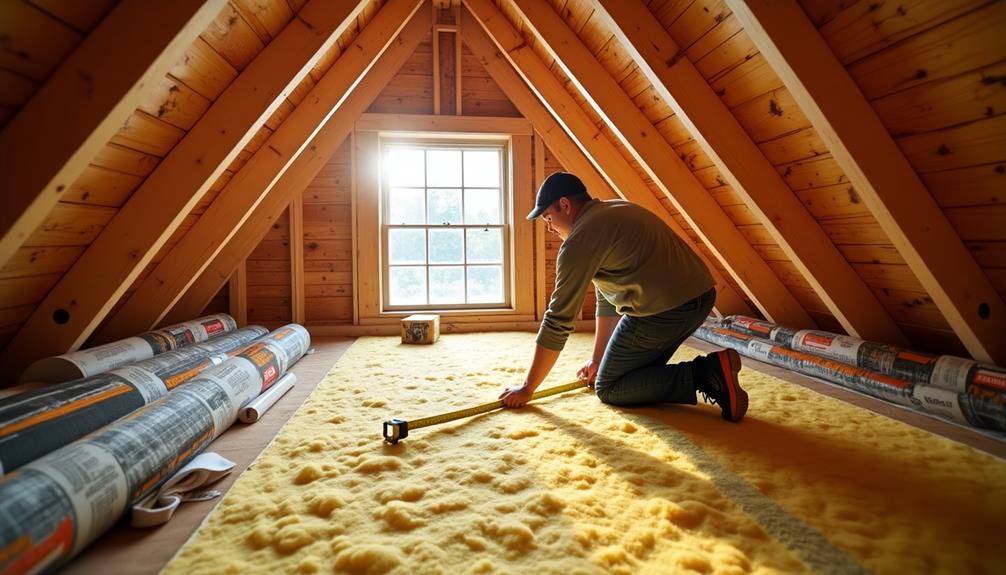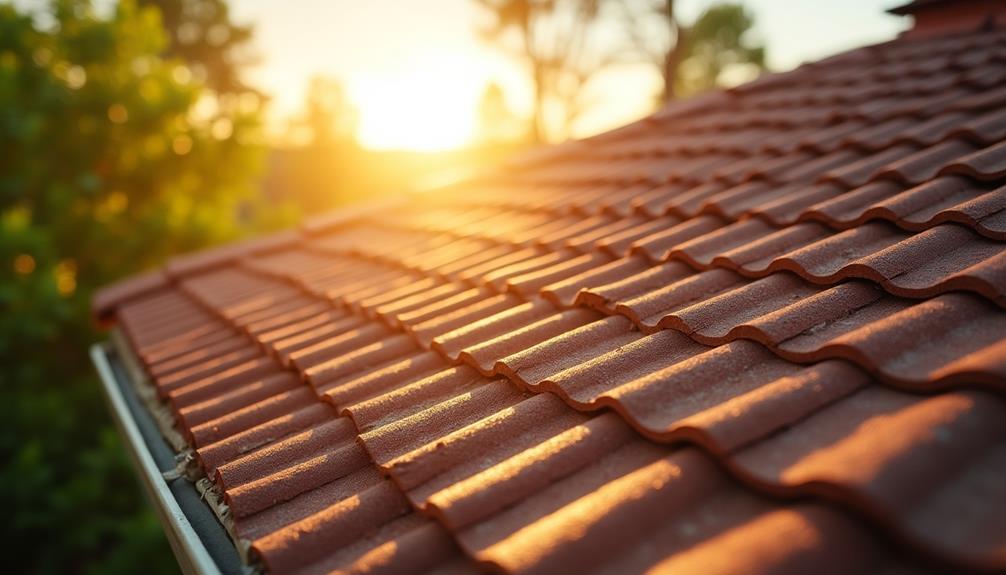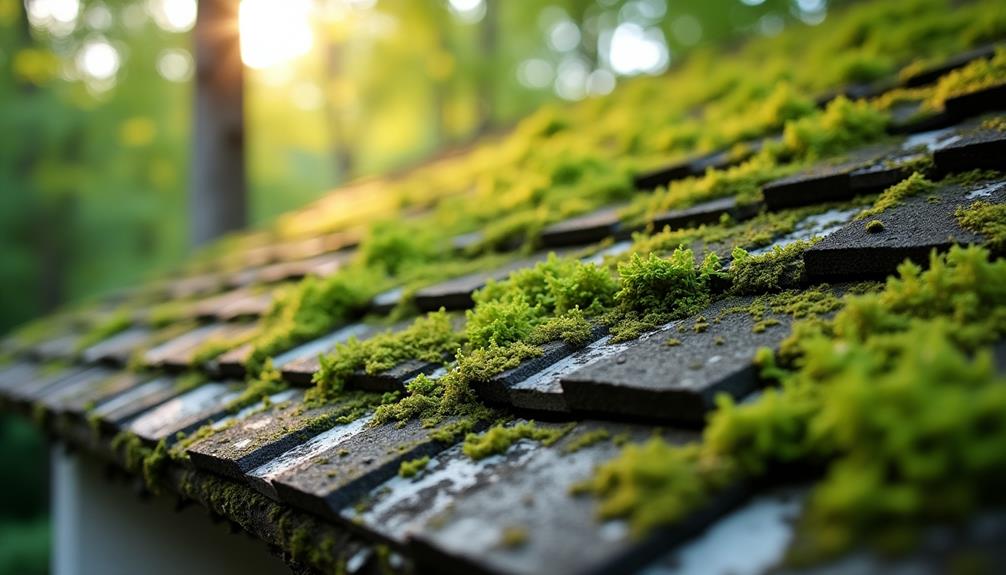To create a safe and functional roof garden, start by assessing your roof's structural integrity with a professional to ensure it can support added weight. Use lightweight materials for planters and soil, and design an effective drainage system to prevent water pooling. Select drought-resistant and native plants to promote sustainability, while implementing a drip irrigation system to conserve water. Ensure safe access by incorporating stable pathways and protective barriers. Create distinct functional zones for easy navigation, while maintaining soil health with regular testing. If you're curious about enhancing your roof garden further, there's much more to explore.
Assess Structural Integrity
Before diving into the exciting world of roof gardens, you need to assess the structural integrity of your building. This step is crucial, as it ensures your roof can safely support the additional weight of soil, plants, and any additional features you plan to include.
Start by conducting a thorough structural assessment, which involves evaluating the existing load capacity of your roof. Consulting with a professional engineer is highly recommended. They'll analyze your building's design and materials, ensuring it can handle the extra load without compromising safety.
During this assessment, they'll consider factors like the type of roofing material, the age of the structure, and local weather conditions, which can impact load-bearing capabilities.
Once you've established that your roof can support a garden, think about how you can enhance its sustainability. Using lightweight soil alternatives or modular planting systems can reduce weight while still providing a lush green space.
Plan for Proper Drainage
To ensure your roof garden thrives, you need a well-designed drainage system that handles excess water efficiently.
Think about the types of plants you'll choose, as their water needs will influence your drainage strategy.
Drainage System Design
Designing an effective drainage system is crucial for a successful roof garden, as it ensures excess water flows away efficiently, preventing structural damage and promoting healthy plant growth.
Start by choosing suitable drainage materials like gravel, perforated drainage pipes, and geotextiles to facilitate optimal water flow. These materials will create a layered system that encourages swift drainage while retaining the necessary moisture for your plants.
Begin with a slope on your roof surface, directing water toward designated drainage points. Incorporate a drainage mat or layer of gravel at the base of your planting medium to prevent waterlogging. Use perforated pipes to collect excess water, directing it to drainage outlets or rainwater collection systems.
Don't forget to install a filter fabric to keep soil and debris from clogging your drainage materials. Regularly inspect your system to ensure it remains functional and free of blockages.
Plant Selection Considerations
Selecting the right plants for your roof garden is essential, especially when considering proper drainage. You'll want to choose plants that thrive in well-drained conditions, as excess moisture can lead to root rot and other issues. Look for drought-resistant varieties, which not only require less water but also help mitigate the risk of over-saturation.
Sustainable sourcing is another crucial factor. Opt for native plants or those adapted to your climate, as they generally have lower water and maintenance needs. These choices promote biodiversity and support local ecosystems.
Incorporating seasonal planting can enhance your garden's resilience. By selecting a mix of perennials and annuals, you can ensure a vibrant display throughout the year while minimizing soil disturbance.
Consider layering your plants, with deeper-rooted species on the bottom to help absorb excess water, and shallow-rooted varieties on top.
Lastly, always keep your drainage system in mind when selecting plants. Ensure that the root systems won't clog drainage paths, allowing water to flow freely.
With thoughtful plant selection, your roof garden will flourish sustainably while providing a functional, beautiful space.
Choose the Right Plants
Choosing the right plants for your roof garden isn't just about aesthetics; it's crucial for sustainability and resilience. Start by considering native plant benefits. These species are well-adapted to your local climate, requiring less water and maintenance.
Incorporate seasonal plant selection for year-round interest and color, ensuring your garden thrives through every season.
Opt for pollinator-friendly options like lavender or coneflower, which attract bees and butterflies. Drought-resistant varieties, such as sedums and succulents, are excellent choices that conserve water while providing unique textures and shapes.
If you're inclined toward culinary delights, explore edible plant choices like herbs and vegetables, adding functionality to your garden.
Think about aesthetic plant combinations that create visual harmony while also catering to maintenance-friendly species. Look for plants that won't overwhelm your space and can coexist peacefully.
By selecting climate-adapted plants, you'll ensure your garden can withstand local weather challenges, minimizing upkeep.
Ultimately, choosing the right plants transforms your roof garden into a sustainable oasis that benefits both you and the environment, creating a vibrant space for relaxation and biodiversity.
Ensure Safe Access
Creating a roof garden involves not just the right plants but also ensuring safe access to your green oasis. Start by establishing secure entry points that comply with safety guidelines.
Make sure your roof access is easy to navigate, incorporating user-friendly design elements that cater to all potential users. For pathways, use stable materials that can withstand the load capacity of both people and plants.
Incorporating protective barriers along edges will help prevent accidents, while navigation aids like clear signage will enhance the user experience. Accessibility considerations should be a priority; ensure that all areas of your roof garden are reachable, even for those with mobility challenges.
It's crucial to develop and communicate emergency procedures in case of accidents. This includes having a robust plan for evacuation and first aid readily available.
Regularly inspect your roof garden's access points and pathways to maintain safety standards. By prioritizing these aspects, you create a sustainable and enjoyable space that everyone can appreciate without compromising safety.
Utilize Lightweight Materials
When embarking on your roof garden project, utilizing lightweight materials is essential for both structural integrity and ease of maintenance. Choosing lightweight options, such as aluminum planters or composite decking, significantly reduces the load on your roof while providing durability and resistance to weather elements.
These materials not only cut down on weight but also offer impressive longevity, making them a smart investment.
Consider using lightweight soil alternatives, like expanded clay aggregates or coconut coir, which retain moisture without the heft of traditional soil. These options promote healthy plant growth while minimizing stress on your rooftop structure.
The material benefits extend to ease of installation and maintenance as well; lightweight materials are generally easier to handle and install, allowing you to complete your project efficiently.
Incorporate modular components like lightweight trellises or vertical gardening systems to maximize space without adding unnecessary weight.
By being intentional about the materials you select, you enhance the sustainability of your roof garden, ensuring it thrives without compromising the safety and integrity of your building.
Making these thoughtful choices will allow you to create a vibrant, functional oasis that stands the test of time.
Incorporate Safety Features
Safety features are crucial for any roof garden, ensuring both your well-being and the structural integrity of your home.
Start by integrating fall protection, such as guardrails and mesh netting, to prevent accidents. Consider fire safety measures, like using fire-resistant materials and maintaining clear access routes for emergency services.
Weather considerations are essential; install windbreaks and ensure proper drainage to handle heavy rains.
Incorporate pest management strategies, like companion planting and natural repellents, to minimize chemical use while protecting your plants.
Effective lighting solutions not only enhance aesthetics but also improve safety during evening use. Opt for solar-powered lights that are energy-efficient and easy to install.
Accessibility features, such as ramps or wide pathways, make your roof garden welcoming for everyone, including those with mobility challenges.
Maintain Soil Health
To create a thriving roof garden, you need to prioritize soil health from the start.
Choose a quality soil mix that supports your plants' needs, and don't forget to conduct regular soil testing to monitor its condition.
Incorporating organic fertilization practices won't only nourish your plants but also enhance the ecosystem in your garden.
Choose Quality Soil Mix
How can you ensure your roof garden thrives? The answer lies in choosing a quality soil mix that supports healthy plant growth.
Start by focusing on the soil composition; a blend of organic matter, peat moss, and perlite can enhance drainage while retaining essential moisture. This combination helps create a lightweight medium, crucial for rooftop stability.
Next, you must achieve a proper nutrient balance. Aim for a mix rich in nitrogen, phosphorus, and potassium, the primary nutrients your plants need to flourish. Adding compost can improve nutrient content and promote beneficial microbial activity, which is vital for soil health.
Don't overlook the importance of pH levels; a slightly acidic to neutral pH (6.0 to 7.0) is ideal for most plants. Testing your soil mix before planting can help ensure that it meets these requirements.
Regular Soil Testing
Once you've chosen a quality soil mix, maintaining its health through regular soil testing is vital for your roof garden's success. By conducting soil composition analysis, you can determine the nutrient levels and organic matter present in your soil, ensuring your plants get the essential elements they need to thrive. This analysis helps you identify deficiencies or excesses, allowing you to adjust your soil mix accordingly.
Additionally, pH level testing is crucial. Most plants prefer a slightly acidic to neutral pH (around 6.0 to 7.0). A pH imbalance can hinder nutrient uptake, leading to poor plant health. Regular testing enables you to monitor fluctuations and make necessary amendments, such as adding lime to raise pH or sulfur to lower it.
Aim to test your soil at least once a year, ideally before planting season. This proactive approach not only enhances the vitality of your plants but also contributes to a sustainable ecosystem in your roof garden.
Organic Fertilization Practices
Maintaining your roof garden's soil health hinges on effective organic fertilization practices. Start by incorporating compost methods that enrich the soil with essential nutrients. Composting kitchen scraps, yard waste, or even coffee grounds creates a nutrient-rich amendment that supports healthy plant growth.
By ensuring proper aeration and moisture balance, you'll accelerate the decomposition process, turning organic matter into black gold for your garden.
Nutrient cycling is critical in promoting soil vitality. When you apply organic fertilizers, they break down slowly, releasing nutrients gradually. This steady supply prevents nutrient leaching and fosters a thriving ecosystem of beneficial microorganisms.
Consider using cover crops during the off-season; they enhance soil structure and contribute organic matter once tilled back in.
Additionally, integrating natural amendments like bone meal or seaweed extract can provide essential trace minerals. Remember to rotate your crops regularly, which not only helps with nutrient cycling but also reduces pest and disease buildup.
With these organic fertilization practices, your roof garden will flourish, yielding vibrant plants and a sustainable environment. Embrace these methods, and you'll foster a resilient and productive rooftop oasis.
Implement Irrigation Systems
What strategies can you use to ensure your roof garden thrives despite the challenges of limited water access?
Implementing an efficient irrigation system is crucial. Consider installing a drip irrigation system, which delivers water directly to the plant roots, reducing waste and promoting healthy growth. This method conserves water and minimizes evaporation, making it perfect for rooftop settings.
In addition to drip irrigation, you can enhance sustainability through rainwater harvesting. By collecting rainwater from your roof, you can create a reservoir that supplies your garden during dry spells. Setting up a simple rain barrel connected to your drainage system can ensure you have a steady water source.
Combining these two methods not only conserves water but also reduces your overall utility costs.
Make sure to install a timer or moisture sensors to automate your irrigation process, ensuring plants receive optimal hydration without overwatering.
With these systems in place, your roof garden will flourish, providing you with a lush, green retreat amidst the urban landscape. Embrace these sustainable practices to cultivate a thriving environment while being mindful of your water usage.
Create Functional Layouts
Creating a functional layout for your roof garden is essential to maximize space and ensure each plant thrives. Start by dividing your garden into functional zones based on the plants' needs and your intended use. For example, designate areas for herbs, vegetables, and ornamental plants, ensuring that each zone has adequate sunlight and accessibility.
Think about design aesthetics as you plan your layout. Use varying heights and textures to create visual interest, and incorporate pathways for easy navigation. Raised beds or containers can optimize space while enhancing the overall look.
Consider the movement of sunlight and wind across your roof garden. Position taller plants on the northern edge to avoid shading shorter ones. Create seating areas or relaxation zones where you can enjoy the garden's beauty—these spaces should be easily accessible and harmoniously integrated with your functional zones.
Lastly, ensure your layout allows for effective water drainage and air circulation. This not only promotes plant health but also minimizes maintenance efforts.
Regular Maintenance and Care
A roof garden's beauty and productivity hinge on regular maintenance and care. To keep your garden thriving, embrace seasonal upkeep tailored to the unique climate and plant choices you've made.
Start by assessing your plants' needs every season. In spring, focus on planting and fertilizing, while summer demands attention to watering and mulching to retain moisture. Come fall, be ready to prune and prepare your garden for winter.
Pest management is crucial in maintaining a healthy roof garden. Regularly inspect your plants for signs of pests or diseases. If you notice an infestation, act quickly—use sustainable methods like introducing beneficial insects or applying organic pesticides to minimize harm to your garden ecosystem.
Don't forget about your garden's physical structure. Check for any signs of wear and tear on the planters and drainage systems.
Cleaning the debris from gutters and ensuring proper drainage will prevent water pooling, protecting your roof's integrity.






